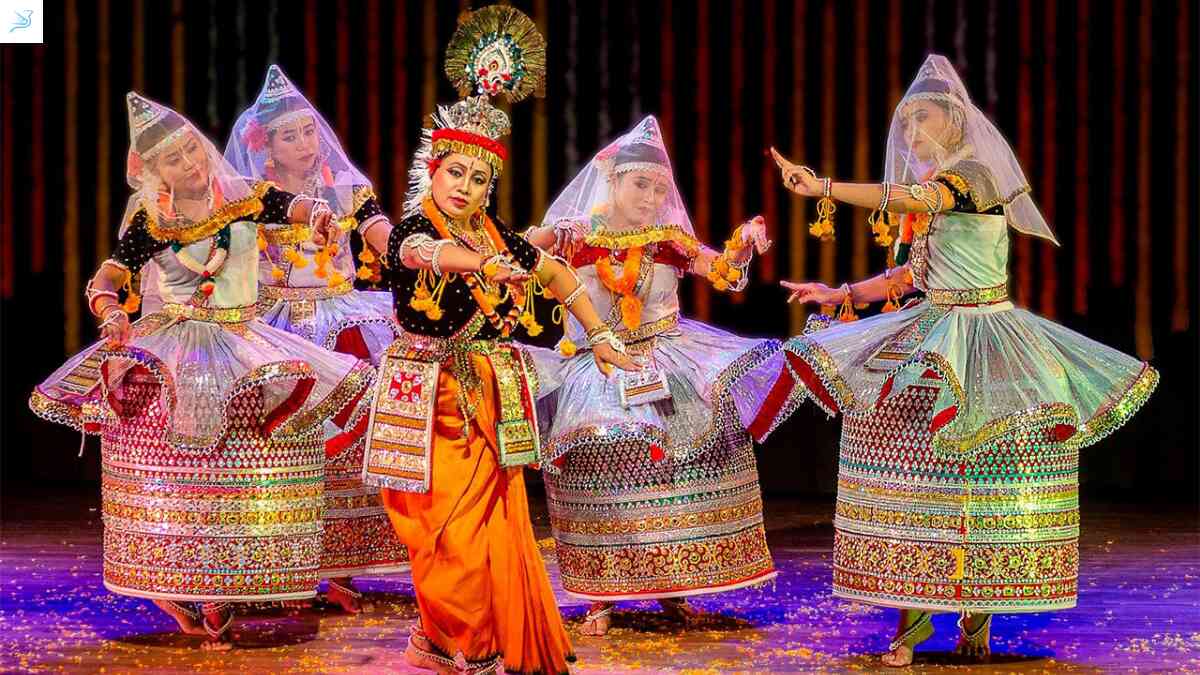Culture Of Manipur
The Manipuri culture is a distinct blend of Korean, Central Indian, and Northeast Indian cultures. Owing to the Hallyu or the Korean wave that has spread worldwide, the impact of South Korean way-of-life is prominent among the younger Northeastern and specially Manipuri people.

During the days of the British Indian Empire, the Kingdom of Manipur was one of the princely states. Between 1917 and 1939, some people of Manipur pressed the princely rulers for democracy. By the late 1930s, the princely state of Manipur negotiated with the British administration its preference to continue to be part of the Indian Empire, rather than part of Burma, which was being separated from India. These negotiations were cut short with the outbreak of World War II in 1939. On 11 August 1947, Maharaja Budhachandra signed an Instrument of Accession, joining India. Later, on 21 September 1949, he signed a Merger Agreement, merging the kingdom into India, which led to its becoming a Part C State. This merger was later disputed by groups in Manipur, as having been completed without consensus and under duress. The dispute and differing visions for the future has resulted in a 50-year insurgency in the state for independence from India, as well as in repeated episodes of violence among ethnic groups in the state. From 2009 through 2018, the conflict was responsible for the violent deaths of over 1000 people. The word "Manipur" is made-up of two Sanskrit words (Maṇi), which means jewel and (Purǝ), which means land/place/abode, Manipur is translated as "Jewelled land". Manipur is mentioned in historic texts as Kangleipak or Meeteileipak. Sanamahi Laikan wrote that officials during the reign of Meidingu Pamheiba in the eighteenth century adopted Manipur's new name. Neighbouring cultures each had differing names for Manipur and its people. The Shan or Pong called the area Cassay, the Burmese Kathe, and the Assamese Meklee. In the first treaty between the British East India Company and Meidingu Chingthangkhomba (Bhagyachandra), signed in 1762, the kingdom was referred to as “Meckley”. Bhagyachandra and his successors issued coins engraved with "Manipureshwar", or "lord of Manipur", and the British discarded the name Meckley. Later on, the work Dharani Samhita (1825–34) popularised the Sanskrit legends of the origin of Manipur's name. Manipur has a population of 2,855,794 as per 2011 census. Of this total, 57.2% live in the valley districts and the remaining 42.8% in the hill districts. The hills are inhabited mainly by the Nagas, and Kukis, and smaller tribal communities and the valley (plains) mainly by the Meiteis, Manipuri Brahmins (Bamons) and Pangal (Manipuri Muslims). Bishnupriya Manipuri, Naga and Kuki settlements are also found in the valley region, though less in numbers.